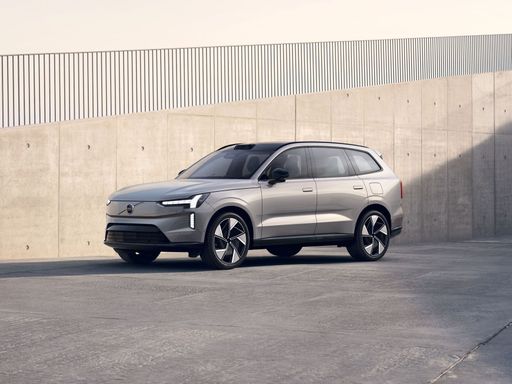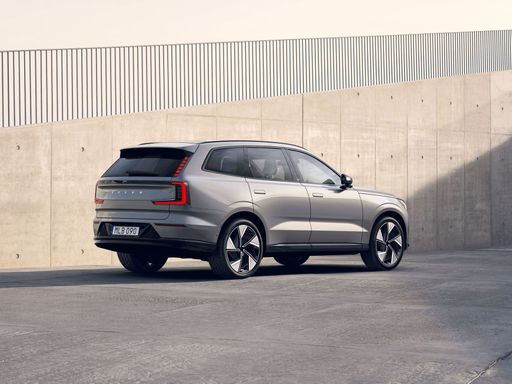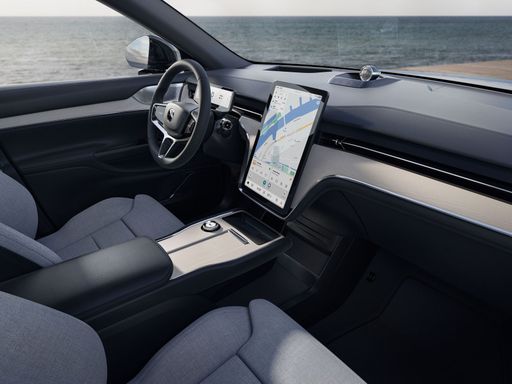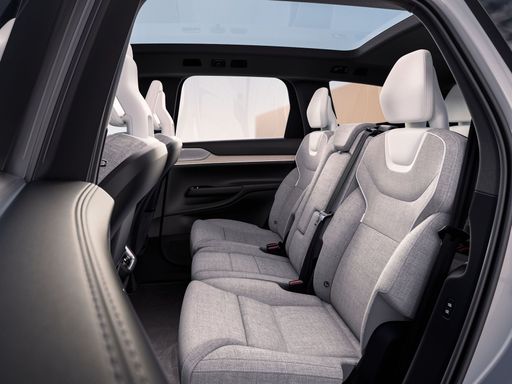Volvo EX90 vs Hyundai IONIQ 9 – Performance, range & efficiency compared
Everyday use, family trips or long-distance drives – here’s where the differences show.
Discover whether Volvo EX90 or Hyundai IONIQ 9 fits your lifestyle better.
Here’s where it gets real: The technical differences in detail
Costs and Efficiency: Price and efficiency are key factors when choosing a car – and this is often where the real differences emerge.
Hyundai IONIQ 9 has a noticeable advantage in terms of price – it starts at 58700 £, while the Volvo EX90 costs 73700 £. That’s a price difference of around 14991 £.
In terms of energy consumption, the advantage goes to the Volvo EX90: with 17.80 kWh per 100 km, it’s to a small extent more efficient than the Hyundai IONIQ 9 with 19.90 kWh. That’s a difference of about 2.10 kWh.
Range is almost identical – both manage about 620 km on a single charge.
Engine and Performance: Power, torque and acceleration say a lot about how a car feels on the road. This is where you see which model delivers more driving dynamics.
When it comes to engine power, the Volvo EX90 has a evident edge – offering 680 HP compared to 428 HP. That’s roughly 252 HP more horsepower.
In acceleration from 0 to 100 km/h, the Volvo EX90 is noticeable quicker – completing the sprint in 4.20 s, while the Hyundai IONIQ 9 takes 5.20 s. That’s about 1 s faster.
In terms of top speed, the Hyundai IONIQ 9 performs barely noticeable better – reaching 200 km/h, while the Volvo EX90 tops out at 180 km/h. The difference is around 20 km/h.
There’s also a difference in torque: the Volvo EX90 pulls slightly stronger with 870 Nm compared to 700 Nm. That’s about 170 Nm difference.
Space and Everyday Use: Beyond pure performance, interior space and usability matter most in daily life. This is where you see which car is more practical and versatile.
Both vehicles offer seating for 7 people.
In curb weight, the Volvo EX90 is slight lighter – 2556 kg compared to 2594 kg. The difference is around 38 kg.
In terms of boot space, the Hyundai IONIQ 9 offers slight more room – 338 L compared to 324 L. That’s a difference of about 14 L.
In maximum load capacity, the Hyundai IONIQ 9 performs a bit better – up to 2419 L, which is about 284 L more than the Volvo EX90.
When it comes to payload, Hyundai IONIQ 9 barely noticeable takes the win – 643 kg compared to 585 kg. That’s a difference of about 58 kg.
Our conclusion: The Volvo EX90 proves to be dominates this comparison and thus becomes our DriveDuel Champion!
Overall, Volvo EX90 is the better all-rounder in this comparison.
Volvo EX90
The Volvo EX90 represents a new era of luxury electric vehicles, combining sophisticated design with cutting-edge technology. Its interior offers a serene environment, enhanced by premium materials and a state-of-the-art infotainment system that ensures both comfort and connectivity. Safety remains paramount, with the EX90 featuring advanced driver assistance features to provide peace of mind on every journey.
details @ media.volvocars.com
@ media.volvocars.com
 @ media.volvocars.com
@ media.volvocars.com
 @ media.volvocars.com
@ media.volvocars.com
 @ media.volvocars.com
@ media.volvocars.com
 @ media.volvocars.com
@ media.volvocars.com
 @ media.volvocars.com
@ media.volvocars.com
Hyundai IONIQ 9
The Hyundai IONIQ 9 is a bold step forward in the automotive world, combining cutting-edge electric technology with a sleek and modern design. This model stands out with its spacious interior and advanced features, ensuring both comfort and convenience for drivers and passengers alike. As Hyundai pushes the envelope in eco-friendly innovation, the IONIQ 9 represents the future of sustainable driving with its impressive range and performance capabilities.
details

|
|
|
|
|
Costs and Consumption |
|
|---|---|
|
Price
73700 - 94100 £
|
Price
58700 - 74400 £
|
|
Consumption L/100km
-
|
Consumption L/100km
-
|
|
Consumption kWh/100km
17.8 - 19.3 kWh
|
Consumption kWh/100km
19.9 - 20.6 kWh
|
|
Electric Range
570 - 620 km
|
Electric Range
600 - 620 km
|
|
Battery Capacity
88 - 102 kWh
|
Battery Capacity
110 kWh
|
|
co2
0 g/km
|
co2
0 g/km
|
|
Fuel tank capacity
-
|
Fuel tank capacity
-
|
Dimensions and Body |
|
|---|---|
|
Body Type
SUV
|
Body Type
SUV
|
|
Seats
6 - 7
|
Seats
7
|
|
Doors
5
|
Doors
5
|
|
Curb weight
2556 - 2764 kg
|
Curb weight
2594 - 2689 kg
|
|
Trunk capacity
324 L
|
Trunk capacity
338 L
|
|
Length
5037 mm
|
Length
5060 mm
|
|
Width
1964 mm
|
Width
1980 mm
|
|
Height
1744 mm
|
Height
1790 mm
|
|
Max trunk capacity
2082 - 2135 L
|
Max trunk capacity
2419 L
|
|
Payload
375 - 585 kg
|
Payload
586 - 643 kg
|
Engine and Performance |
|
|---|---|
|
Engine Type
Electric
|
Engine Type
Electric
|
|
Transmission
Automatic
|
Transmission
Automatic
|
|
Transmission Detail
Reduction Gearbox
|
Transmission Detail
Reduction Gearbox
|
|
Drive Type
Rear-Wheel Drive, All-Wheel Drive
|
Drive Type
Rear-Wheel Drive, All-Wheel Drive
|
|
Power HP
333 - 680 HP
|
Power HP
218 - 428 HP
|
|
Acceleration 0-100km/h
4.2 - 6.8 s
|
Acceleration 0-100km/h
5.2 - 9.4 s
|
|
Max Speed
180 km/h
|
Max Speed
190 - 200 km/h
|
|
Torque
480 - 870 Nm
|
Torque
350 - 700 Nm
|
|
Number of Cylinders
-
|
Number of Cylinders
-
|
|
Power kW
245 - 500 kW
|
Power kW
160 - 315 kW
|
|
Engine capacity
-
|
Engine capacity
-
|
General |
|
|---|---|
|
Model Year
2025
|
Model Year
2025
|
|
CO2 Efficiency Class
A
|
CO2 Efficiency Class
A
|
|
Brand
Volvo
|
Brand
Hyundai
|
What drivetrain options does the Volvo EX90 have?
The Volvo EX90 is offered with Rear-Wheel Drive or All-Wheel Drive.
The prices and data displayed are estimates based on German list prices and may vary by country. This information is not legally binding.
